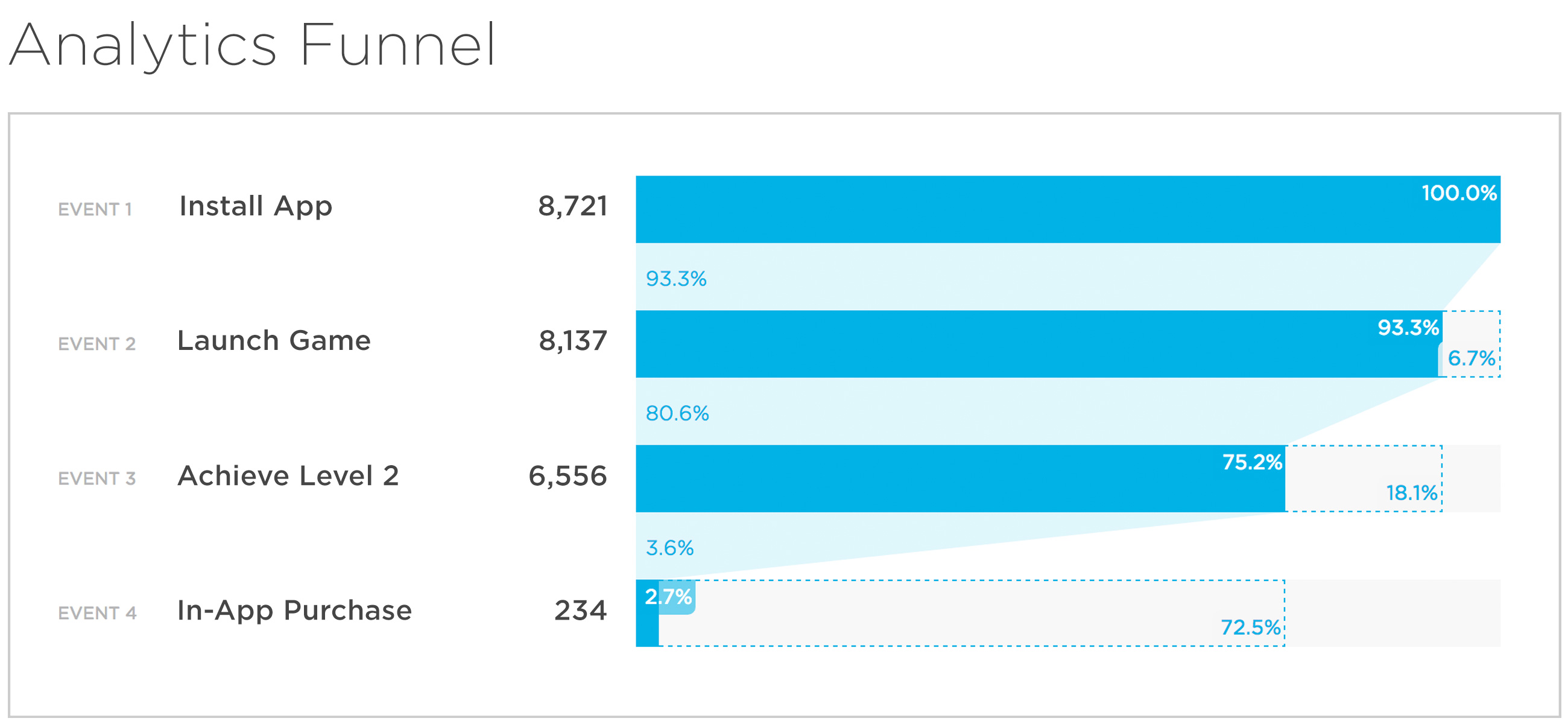
If you’re managing a mobile app or property, you likely fit into one of these categories: 1) you are flying blind and not doing any promotion of your app, 2) you are buying media and flying blind—even worse because you’re spending money, 3) you’re buying media while using an attribution toolset that isn’t meeting your needs, or 4) you’re buying media while using an attribution toolset and feeling confident about how you’re attributing conversions to the right source.
Let’s review. In its most basic form, an attribution tool has two key objectives: to accurately give credit to the right source for a given action, and to record what happened so that there is an ability to audit it later.
Here’s the problem, as I’ve mentioned in previous posts:
- Not all attribution tools are created equal.
- Just because you’re using an attribution tool doesn’t mean that you’re accurately giving credit to the right source.
The reason for the above statement is multifaceted but essentially rests in the role of configurability in your attribution engine and the role of fraud. Every business has a different mix of media. The rules that determine credit need to be configurable, and Kochava has the greatest level of configurability on the market.
Now for the point of this post: Beyond attribution, the objective is to persist and maintain, as a system of record, the history of attribution.
Is your attribution tool persisting data? Do you know? Have you been told it’s only for 30 days “for privacy and regulatory reasons”? Or, is it for 90 days, and you’re told that the attribution tool has a postback engine so that you can store the attribution history yourself?
Let’s cut to the chase: Companies relying on the Kochava Unified Audience Platform enjoy 15 months of persistence out-of-the-box with the ability to extend longer as they desire. Here are four reasons why persistence is so critical:
1. Provide a system of record for attribution
As the system of record, an attribution tool must have long-term historical data to provide an independent record of transactions and attribution. Did one click come in before another? Were the attribution rules configured to provide credit for a particular partner because of a tight lookback window on a network or tracker? Did the postback signal get sent? Has a specific device already been attributed? For each of these questions, there must be a definitive answer. With Kochava, all of these transactions are recorded and persisted. Not providing long-term persistence is like using a bank that erases transactions beyond 30 days and says it’s up to you to keep your checkbook balanced. While balancing your checkbook is important, can you imagine being okay with a bank like that?
2. Avoid re-attribution
One of our competitors’ dirty secrets is that by having a short persistence history they can cut costs, and attribution for devices that have already been attributed become candidates for attribution again. This means that your media spend is likely higher than it needs to be simply because the vendor charges on a per attributed install basis and has a specific persistence policy that enables them to generate more revenue. We’ve done the analysis and up to 12% of devices would cross this chasm if they didn’t use Kochava.
3. Provide data replay to other ecosystem partners
Because Kochava holds record-level data across clicks, installs and postbacks sent to partners, it is very easy to re-send data programmatically to ecosystem partners if they missed signals or were unavailable for a given time band. A legitimate system of record should have these facilities because attribution is the centerpiece of the marketing equation.
4. Understand trends
By purging data at 30 or 90 days, one cannot fully understand trend data. Most trends are mapped by quarter or year-to-year. By providing 15 months out-of-the-box, Kochava customers can be confident in the ability to understand trends regardless of how the data is composed. Pro Tip: a chart showing “count of counts” does not represent long-term persistence. A “count of counts” is a rolled up or aggregated view of events or actions. Our competitors will often point to that and say, “we store data.” However, if you want to organize the data in any other way, you must retain the record-level data so you can build new aggregations or roll-ups as the business needs arise. One simply needs to look at our Funnel tool where marketers can selectively decide what user activity they want to depict and then can actually export device identifiers at each stage. This is out-of-the-box behavior for a tool that is properly supporting visualization of trend data.

Kochava has long been positioned as the most feature-rich attribution platform in the industry. Only the top marketers have historically selected Kochava to be their measurement tool of choice. Indeed, while other companies in attribution tout “market share dominance” because more apps have integrated their SDK, when you look at the apps that spend the most in ad spend, Kochava is the clear market leader.
In each of the four cases above, a marketer could cobble capabilities together by buying other tech and integrating those tools themselves. This increases cost of ownership, increases data debt organizationally and ultimately slows an org down—limiting their agility in making key decisions quickly. In reality, marketers who rely on Kochava for attribution see campaign lift, save money through fraud mitigation and deduped attribution and are increasingly able to get better value out of their media spend due in part to their access to historical, record-level data. No more flying blind. Our customers chart their own paths armed with clear data from the industry’s most configurable tools.
Regardless of where you are in building or promoting your mobile properties, I suggest you consider the importance of data persistence when you select an attribution toolset. While the Kochava Unified Audience Platform is certainly built for market leaders, Kochava offers Free App Analytics®, which provides a starter kit of attribution for emerging advertisers. If cost is your concern, you can start with Free App Analytics® and upgrade to the Unified Audience Platform when the time is right.
About the Author

Charles Manning is the founder and CEO of Kochava, the leading mobile attribution analytics platform serving tier-one advertisers worldwide. For nearly 20 years, he has been creating technologies that use data for system optimization, ranging from business service management (BSM) to information technology (IT) to attribution analytics. Charles began his career at Oracle and later held executive and C-Level positions at M-Code, Managed Objects, and PLAYXPERT.




